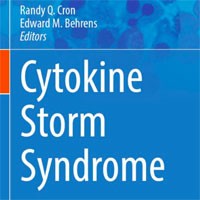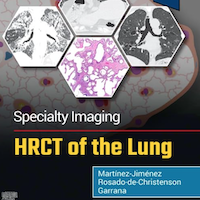Tag: COVID-19
Severe COVID-19 Early Identification and the Need for ICU Care Based on Objective Risk Factors
The study found that several factors, including advanced age; male gender; and comorbid conditions like diabetes, chronic lung disease, and CVD had a strong association with ICU admission among COVID-19 patients. Similarly,... read more
COVID-19 vs non-COVID-19 Patients Without Hematological Malignancies Treated for Invasive Pulmonary Aspergillosis
COVID-19-associated pulmonary aspergillosis (CAPA) patients have less comorbidities and higher fungal burden compared to Putative Invasive Pulmonary Aspergillosis (PIPA), but clinical outcomes are similar between groups.... read more
COVID-19 Omicron: Immunocompromised vs. Non-immunocompromised Patients
Immunocompromised patients admitted to the ICU due to COVID-19 during the omicron period had higher mortality than non-immunocompromised patients. Additionally, immunocompromised patients with COVID-19 had higher mortality... read more
Prone Position: Achieving Nutritional Goals
Critically ill patients in the prone position had longer hospital stays and higher mortality rates, while being more likely to initiate and remain on enteral nutrition for a longer period. However, no significant differences... read more
Nebulized Long-Acting Bronchodilators to Treat ARF in an Older Patients
Although long-acting bronchodilators are not approved to treat acute respiratory failure (ARF), the older adult in this case clinically improved after three doses of revefenacin and arformoterol. Additional studies are... read more
Different Anticoagulation Regimens Effectiveness in Critically Ill Patients
This study compared the efficacy of therapeutic anticoagulation guided by anti-Xa levels vs. a D-dimer-based protocol in ICU patients with COVID-19. Given the heightened risk of thrombosis despite anticoagulation therapy... read more
Cytokine Storm Syndrome
Cytokine Storm Syndromes, including HLH and MAS, are frequently fatal disorders, particularly if not recognized early and treated during presentation. The genetics of Cytokine Storm Syndromes are being defined with many of... read more

Mortality Predictor with sPAP in Elderly Critically Ill with Severe COVID-19 Pneumonia
Mortality in general ARDS patients remains high, with many experiencing long-lasting sequelae. Numerous studies have been conducted to identify predictors of mortality in COVID-19 patients, particularly regarding right ventricular... read more
Diastolic Dysfunction Increases AKI Rick in COVID-19 Patients
Diastolic dysfunction increases the risk of acute kidney injury (AKI) in patients with severe COVID-19. Using point-of-care ultrasound (PoCUS) to assess left ventricular diastolic function in the ICU may be a useful parameter... read more
Unlocking the Predictive Power of Nutritional Scores in Septic Patients
This study highlights the significant prognostic utility of nutritional status evaluation in septic patients admitted to internal medicine wards. Among the tools evaluated, the mNUTRIC score—likely because of its dual... read more
Analgosedation and Delirium Practices in Critically Ill Patients
Before the COVID-19 pandemic, the management of analgosedation was characterized by the predominant use of targeted protocols that favored priority on mild and dynamic sedation in critically ill patients. During the pandemic... read more
AKI and Mortality Predictors of Systemic Autoimmune Diseases and COVID-19
The present study highlights renal parameters and outcomes associated with various systemic autoimmune diseases and COVID-19. Patients who presented with low oxygen saturation (... read more
APRV vs. BIPAP Ventilation in COVID-19 Associated ARDS
Despite of higher mean tidal volumes and higher mean airway pressures in airway pressure release ventilation (APRV) vs. biphasic positive airway pressure (BIPAP), both modes did not present an increased risk of volu- or barotrauma... read more
Cytokeratin-18 Levels in COVID-19 Patients
This study analyzed 176 samples, including 63 ICU-admitted patients and 88 non-ICU-admitted patients. A substantial difference was found between the AST and CK-18 levels of the patients receiving ICU care and those who did... read more
New Insights: Inhaled Nitric Oxide in Severe COVID-19 Patients
This study provides novel insights into the use of inhaled nitric oxide in severe ARDS COVID-19 patients. Specifically, we demonstrate that the iNO effect of oxygenation improvement is delayed with a prolonged feature that... read more
Cellular Therapy with Mesenchymal Stromal Cells in Sepsis
Cellular therapy with mesenchymal stromal cells (MSCs) is a promising therapeutic modality in sepsis. Positive effects are mainly associated with frequent infusions and the dose of 1 × 106 cell/kg. Larger scale studies... read more
Inflammatory Markers and Severity in COVID-19 Patients with Clostridioides Difficile Co-Infection
The interplay of Severe Acute Respiratory Syndrome Coronavirus 2 (SARS-CoV-2) infection and Clostridioides difficile infection (CDI) poses a critical clinical challenge. The resultant inflammatory milieu and its impact... read more
Specialty Imaging: HRCT of the Lung
Part of the highly regarded Specialty Imaging series, HRCT of the Lung, third edition, reflects the many recent changes in HRCT diagnostic interpretation. An easy-to-read bulleted format and thousands of state-of-the-art... read more

Impact of Extended-course Oral Nirmatrelvir/Ritonavir in Established Long COVID
Extended courses of nirmatrelvir/ritonavir may have meaningful benefits for some people with Long COVID but not others. We encourage researchers to study how and why nirmatrelvir/ritonavir benefits some and what course length... read more
Anticoagulation Among COVID-19 Patients
In this prospectively designed meta-analysis of randomized trials, administration of therapeutic- compared with prophylactic-dose anticoagulation with heparins to patients hospitalized for COVID-19 was associated with 23%... read more
Immune Cell-Based vs. Albumin-Based Ratios as Outcome Predictors in Critically Ill COVID-19 Patients
This study aimed to assess the prognostic value of an array of biomarkers regarding the likelihood of a lethal outcome in critically ill COVID-19 patients. We took advantage of the opportunity to classify them into immune... read more
Mechanical Ventilator-Associated Pneumonia in the COVID-19 Pandemic Era
The most common pathogens isolated in our ventilator-vssociated pneumonia (VAP) patients were Acinetobacter spp., Pseudomonas aeruginosa, Klebsiella pneumoniae, and Staphylococcus aureus. Resistance to the major classes... read more









